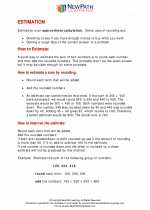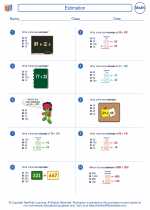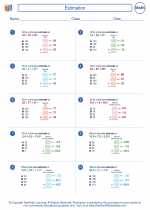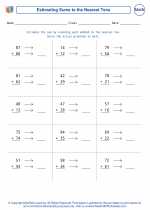- Identify the digit in the place value you are rounding to. For example, if you are rounding to the nearest ten, look at the ones digit.
- Look at the digit to the right of the identified digit. If this digit is 5 or greater, add 1 to the identified digit. If it is 4 or less, leave the identified digit unchanged.
- Change all the digits to the right of the identified digit to zero.
- The digit in the tens place is 7.
- The digit to the right of 7 is 3, which is less than 5, so we leave the 7 unchanged.
- Change the ones digit to zero, so 73 rounded to the nearest ten is 70.
- To round to the nearest ten, look at the ones digit.
- To round to the nearest hundred, look at the tens digit.
- To round to the nearest thousand, look at the hundreds digit, and so on.
- Practice rounding numbers to the nearest ten, hundred, and thousand.
- Try rounding larger numbers, such as 5-digit or 6-digit numbers.
- Apply rounding in real-life scenarios, such as estimating costs or quantities.
- Challenge yourself with word problems that involve rounding.
◂Math Worksheets and Study Guides Fifth Grade. Estimation
Study Guide Estimation
Estimation  Worksheet/Answer key
Worksheet/Answer key Estimation
Estimation  Worksheet/Answer key
Worksheet/Answer key Estimation
Estimation  Worksheet/Answer key
Worksheet/Answer key Estimation
Estimation  Worksheet/Answer key
Worksheet/Answer key Estimating to the Nearest Tens
Estimating to the Nearest Tens 

 Worksheet/Answer key
Worksheet/Answer key
 Worksheet/Answer key
Worksheet/Answer key
 Worksheet/Answer key
Worksheet/Answer key
 Worksheet/Answer key
Worksheet/Answer key

The resources above cover the following skills:
Algebra (NCTM)
Use mathematical models to represent and understand quantitative relationships.
Model problem situations with objects and use representations such as graphs, tables, and equations to draw conclusions.